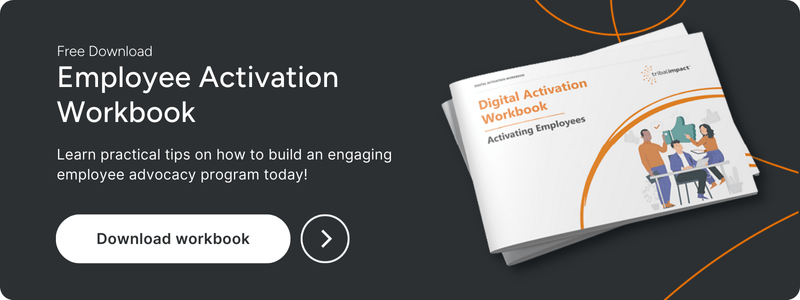With all of LinkedIn and the media debating the pros and cons of whether the office environment as we know it is dead - and endless polls on home/office working combination ratio employees would prefer - it’s easy to forget that mobile and deskless workers make up 80% of the workforce.
71% of company executives say that employee engagement is key to their company’s success but the deskless workforce can be a major obstacle to this. Engagement is about much more than the immediate relationships we have with team members - which for some deskless employees like frontline workers may be in fruitful supply. It’s about an overall sense of belonging with an employer’s culture and values.
Although many employers initially turned to employee advocacy as a way to improve their brand awareness and support their sales and marketing strategies, many are now realising it could have an unexpected role to play in helping them overcome it.
Dynamic Signal’s Customer Impact Survey 2019 found that organisations using their employee advocacy tool reported a 30% increase in employee engagement.
Wondering how? Here’s how!
Employee Advocacy Helps Foster Colleague Relationships
Even though the deskless workforce may have their immediate team members, they can sometimes suffer from a feeling of “not belonging”, especially those who are out in the field.
The photos and day-to-day insights that employees share with advocacy tools gives employees the chance to connect with colleagues outside of their immediate team. It helps build a sense of camaraderie usually found at the office coffee machine.
Easy-To-Consume Content
With advocacy tools, your employees can read the customer-friendly version of corporate announcements, such as end-of-year returns and new product releases. Customer-friendly becomes employee friendly - something many organisations are guilty of forgetting to focus on.
Want to harness the social power of your employees?
Easily Tailor Communications
Meaningful and personalised internal communications and useful content becomes even more critical with deskless workers. With employee advocacy tools, you can segment by employee personas such as industry vertical or role, just as you would with marketing personas. With the analytics available within the tool, you can even begin to refine what they receive, by identifying which content they consume and share most from with the tool.
Cut Through The Corporate Noise
As advocacy tools’ initial use case was to make social sharing easier, by their very nature they're optimised for mobile - with many now even offering mobile applications. Important announcements can even be sent via push notifications - cutting through the noise of other communication methods.
It Helps Employees Improve Their Career Prospects
Employees want to work for employers that provide good career prospects and a chance for development and employee advocacy can help them with this in a myriad of ways.
With the right training, employees can build up their professional brand effectively, build a strong network of relevant connections and even become thought leaders or influencers - which can help them in their current or future roles. For those in sales, it can be a useful stepping stone to the social selling programs, helping them to improve their performance.
Employee Advocacy Makes Employees Visible To And Connected With Leaders
In the debate about the return to office work for the normally deskbound workforce, one argument raised by some leaders is that home working denies employees the chance to collaborate with colleagues, learn from them and also build relationships with managers.
As we’ve seen, employee advocacy not only helps your workers showcase what they are doing. It also gives them a chance to build a network of influence and business impact beyond the confines of their office - and publicly demonstrate this to leadership.
This helps improve employee engagement (which, as we mentioned earlier is 30% higher in companies with advocacy programs). And this in turn helps business. As we mentioned earlier, those with advocacy programs see a 30% increase in employee engagement. And it translates to business results. They’re:
- 20% more likely to have employees that will stay (Altimeter Group & LinkedIn)
- 58% more likely to attract talent
- 20-25% more productive
Not to mention the business benefits that aren’t related to employee engagement such as increased sales, better conversions, faster response to competititve threats and opportunites and improved customer experience. (See these employee advocacy statistics on the benefits and more, and here too.)

